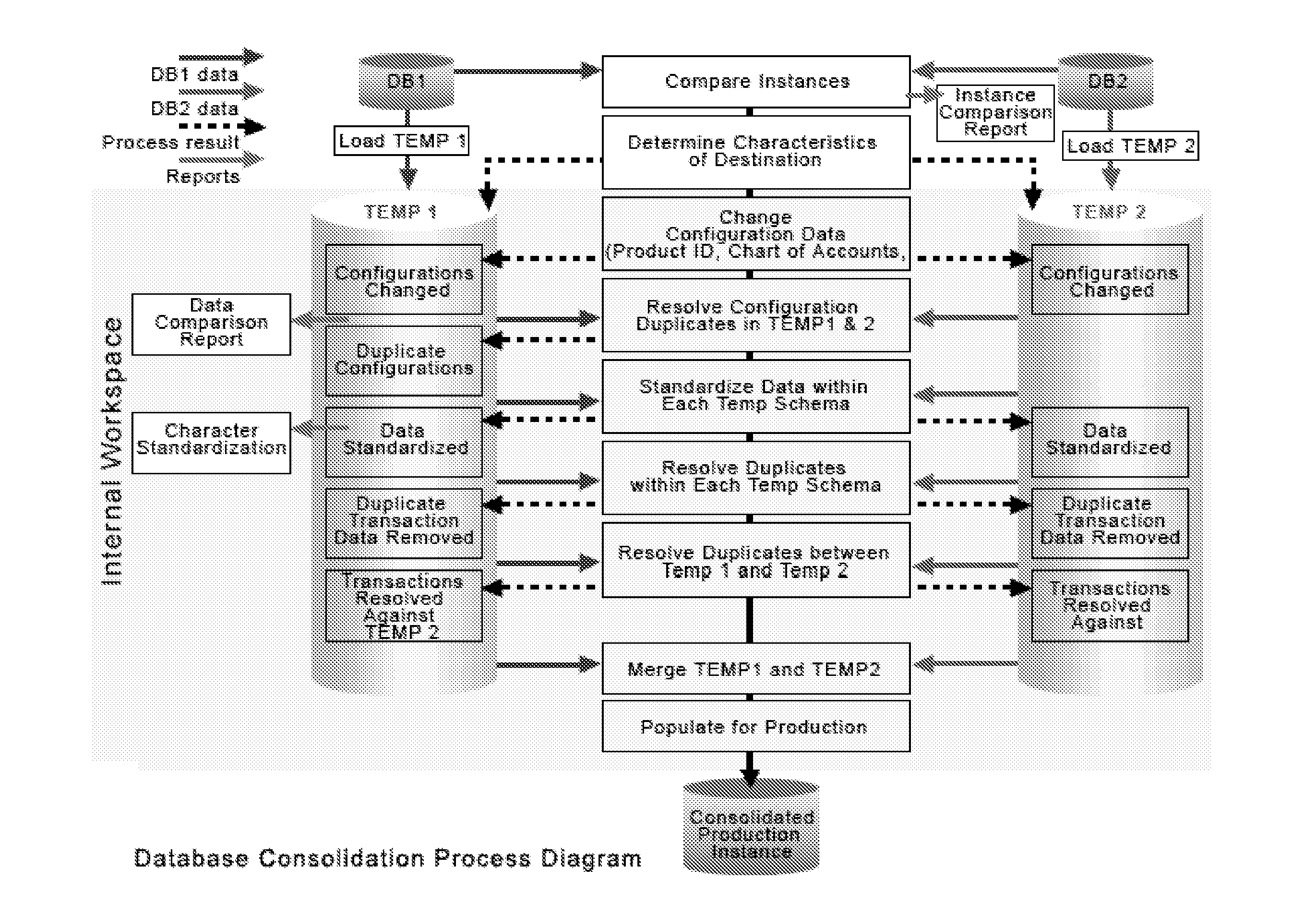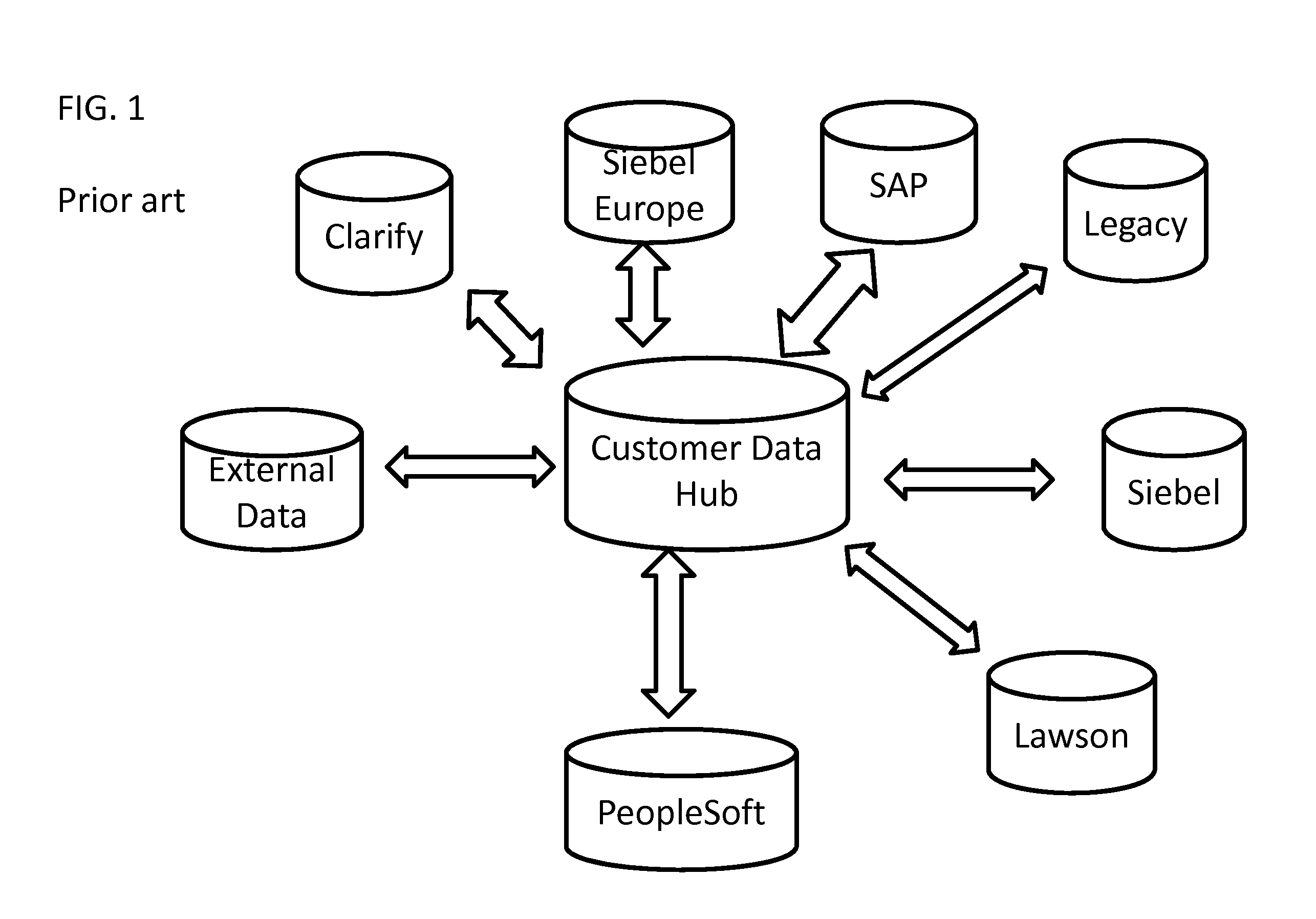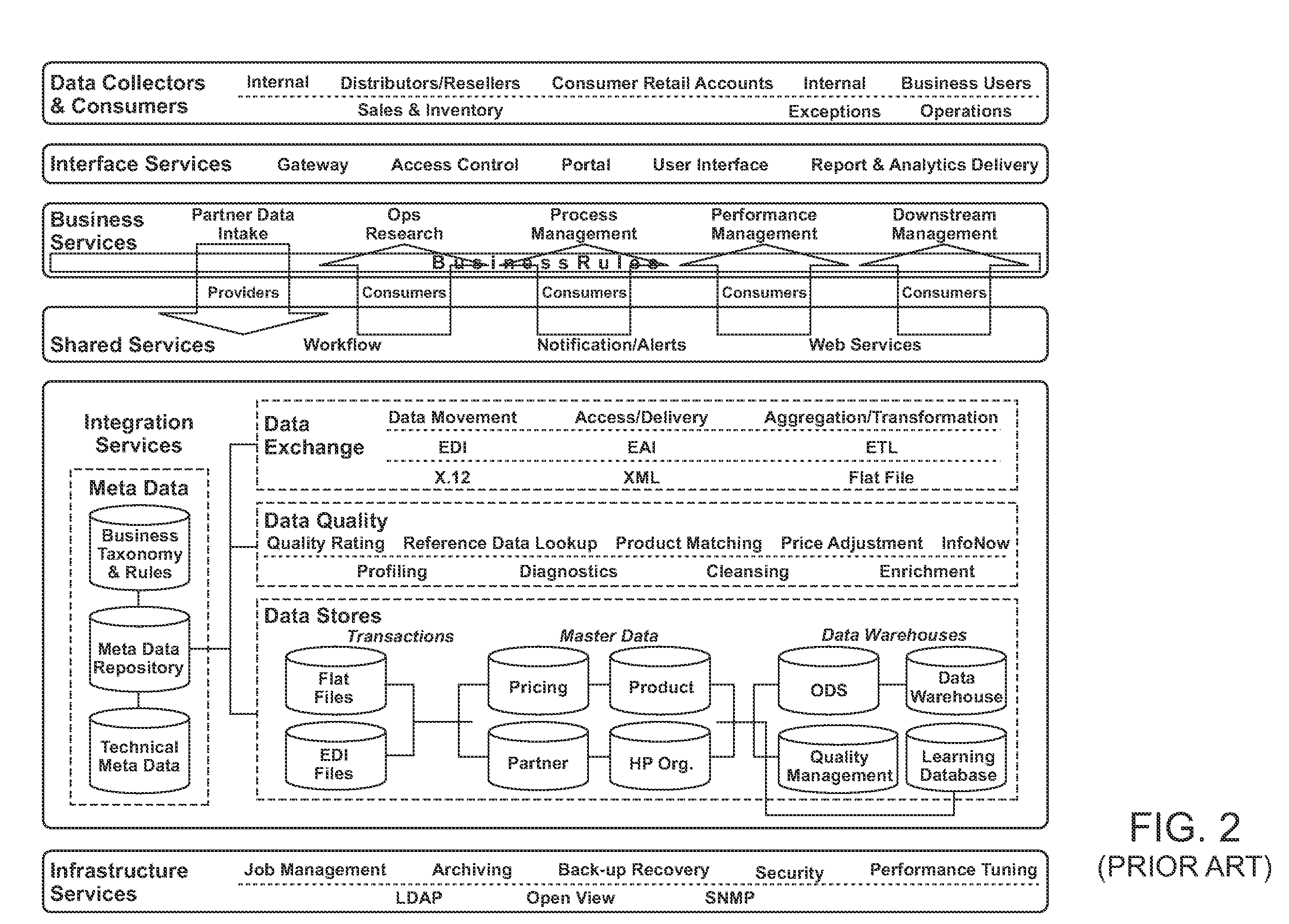Method for database consolidation and database separation
a database and database technology, applied in the field of database consolidation and database separation, can solve the problems of increasing network capacity, requiring increased network capacity, and difficult database management, and presenting a challenge to both the acquiring entity and the acquiring entity
- Summary
- Abstract
- Description
- Claims
- Application Information
AI Technical Summary
Problems solved by technology
Method used
Image
Examples
Embodiment Construction
[0021]FIG. 3A graphically illustrates the methods disclosed in greater detail herein. As shown, three source databases are processed with user interaction to copy, filter, change and merge metadata, data, and business processes maintained in the source databases. A rules engine operates to maintain relational and data integrity and enforce standards and data quality. The metadata, data, and business processes are then mapped to a destination database using a built-in knowledge repository.
[0022]FIG. 3B schematically illustrates methods disclosed in greater detail herein. Data from a first database (“DB1”) and second database (“DB2”) are compared, and an instance comparison report is generated. A first and second temporary database (“TEMP1” and “TEMP2”) are loaded and receive various operations. The characteristics (such as metadata and the like) about a destination database that will receive the consolidated DB1 and DB2 are determined. Based on these determined characteristics, the c...
PUM
 Login to View More
Login to View More Abstract
Description
Claims
Application Information
 Login to View More
Login to View More - R&D
- Intellectual Property
- Life Sciences
- Materials
- Tech Scout
- Unparalleled Data Quality
- Higher Quality Content
- 60% Fewer Hallucinations
Browse by: Latest US Patents, China's latest patents, Technical Efficacy Thesaurus, Application Domain, Technology Topic, Popular Technical Reports.
© 2025 PatSnap. All rights reserved.Legal|Privacy policy|Modern Slavery Act Transparency Statement|Sitemap|About US| Contact US: help@patsnap.com



